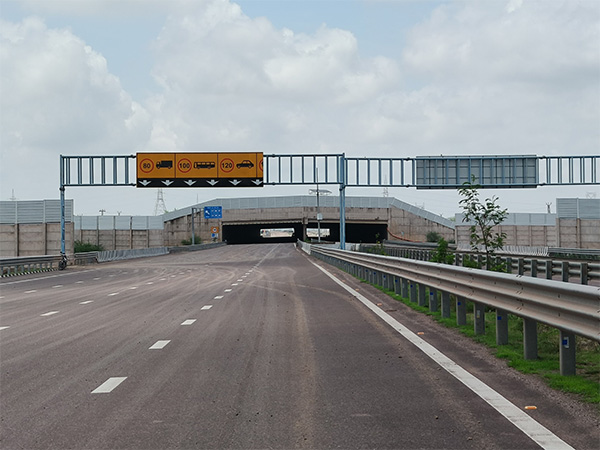India's First Wildlife Corridor: A New Paradigm in Eco-Friendly Highways
In a pioneering initiative, the National Highways Authority of India inaugurated the country's first wildlife corridor on the Delhi-Mumbai Expressway. Spanning 12 kilometers through the Ranthambore Tiger Reserve buffer zone, it integrates ecological conservation with infrastructure, featuring wildlife overpasses and underpasses for safe animal passage.

- Country:
- India
The National Highways Authority of India (NHAI) has embarked on a groundbreaking endeavor, unveiling the nation's first wildlife corridor on a national highway, marking a significant stride in blending infrastructure development with environmental conservation.
This 12-kilometer section, forming part of the ambitious Delhi-Mumbai Expressway, traverses the buffer zone of the renowned Ranthambore Tiger Reserve. Ingeniously designed, it includes five wildlife overpasses and the country's longest underpass to ensure the unimpeded movement of wildlife. This initiative represents a landmark moment in Indian history, as an expressway now serves both human and wildlife transportation needs simultaneously.
Developed in close collaboration with the Wildlife Institute of India and the Ministry of Environment and Forests, the corridor lies within a biodiverse region between Ranthambore and Chambal Valley. According to Pradeep Attri, NHAI Regional Officer, "This stretch posed one of the biggest challenges of the Delhi-Mumbai Expressway project, requiring meticulous planning to preserve wildlife habitats. Our strategy included constructing wildlife overpasses, and unique eco-friendly infrastructure solutions to safeguard both animals and nature."
The project involved installing extensive boundary walls and sound barriers to shield wildlife from traffic disturbances. It made significant strides in eco-friendly construction, such as planting 35,000 trees, implementing rainwater harvesting systems, and using sustainable construction methods, solidifying its position as a paradigm for future projects in India.
(With inputs from agencies.)
ALSO READ
11 Years of Infrastructure Revolution: India's Journey Towards Prosperity
Infrastructure Revamp: Major Demolitions in Poonch for Road Expansion
Decade of Transformation: India's Infrastructure Revolution
India's Rail Infrastructure Boost: Green Light for New Rail Doubling Projects
Tesla's Political Journey: From Eco-Friendly Innovation to Far-Right Symbol










